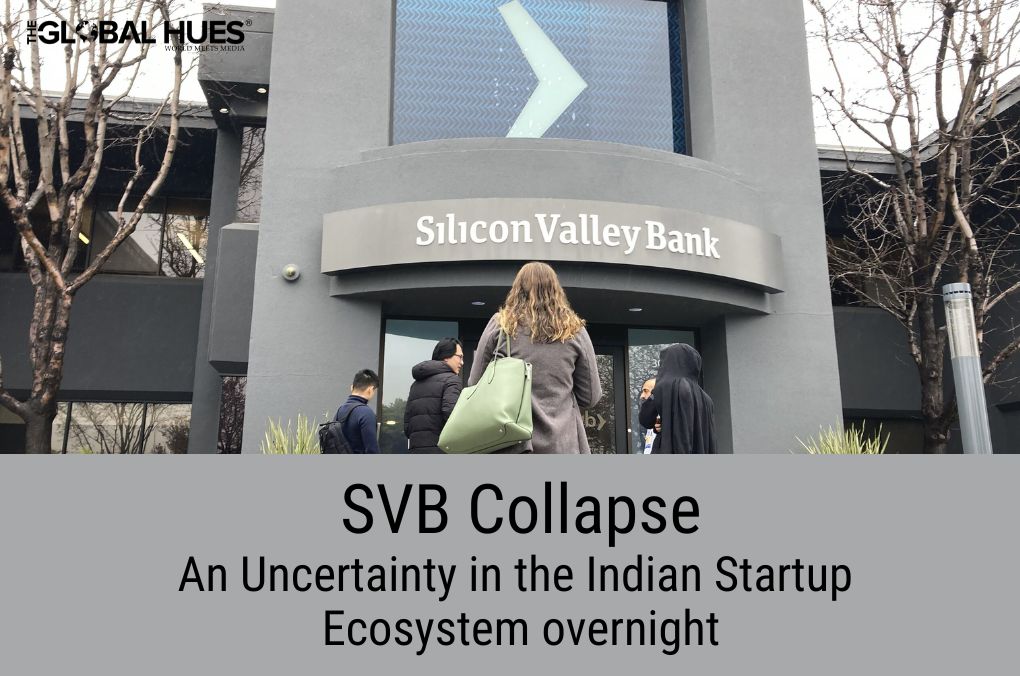-
Silicon Valley Bank collapse can affect over a lakh of jobs.
-
The FDIC’s standard insurance covers up to $250,000 per depositor. What happens to the depositors whose more than $250,000 are lying in the bank?
-
Companies like RazorPay, AngelList and other neo-banks have jumped in to provide solutions to startups.
On 9th March 2023, major US Banks went into panic losing more than $80 billion in market value. How? Because of the country’s 16th largest Silicon Valley bank whose share sank 60%.
Now, Silicon Valley Bank is everywhere in the news. Founded in 1983, this California-based bank failed after the depositors hurried to withdraw their money. But what went wrong? How is it going to impact the Indian Startup Ecosystem? What’s Next? Let’s find out the answers.
Before we go deeper, let’s try to understand more about the bank first.
About Silicon Valley Bank
![]()
Silicon Valley Bank was founded by former Bank of America managers Bill Biggerstaff, Robert Medearis, and Roger Smith. Its major clients include venture capital firms, private equity firms, VC-backed startups and wealthy tech workers.
The bank had assets close to $212 billion (as of 31 December 2022) with clients like Shopify, Pinterest, Crowdstrike, VC firm Andreessen Horowitz, and Teladoc Health.
The bank deposits amounted to $189 billion due to a massive funding boom in 2021. Thereafter, the bank decided to heavily invest in the bond market. The interest rate at that time was nearly zero. Like most other banks, SVB kept a small per cent of deposits in hand and invested the rest.
In 2022, the US Federal Reserve started raising interest rates which further resulted in driving down bond-holding values. Moreover, it became difficult for VC firms to borrow money to invest. Mass Lyoffs, Recession and Funding Winter put pressure on bank clients to withdraw their deposits. Following this, the bank was forced to sell its investments at a lower value. On 8th March 2023, the bank disclosed a $1.8 billion loss from a sale of about $21 billion worth of securities.
The Financial regulators closed Silicon Valley Bank on 10th March. It stays under the control of the Federal Deposit Insurance Corporation (FDIC). The corporation has created a new institution called Deposit Insurance National Bank of Santa Clara to hold the deposits.
What About The Depositor’s Money?
The FDIC’s standard insurance (the amount of money that regulators insure) covers up to $250,000 per depositor. But what happens to the depositors whose more than $250,000 are lying in the bank?
Whether these companies and startups get their money back will be determined by:
a) When the corporation sells off Silicon Valley assets and pays them back, or
b) When another bank takes ownership of the remaining assets
Biggest Bank Failures Since 2001
| Bank | Assets | Deposits |
| WASHINGTON MUTUAL | $307 billion | $188 billion |
| SILICON VALLEY BANK | $212 billion | $173 billion |
| INDYMAC | $32 billion | $19 billion |
| COLONIAL BANK | $25 billion | $20 billion |
| GUARANTY BANK | $13 billion | $12 billion |
Source: FDIC/FactSet
Can The Failure of A US Bank Affect Startups in India?
Well, more than 60 Indian startups have their accounts in Silicon Valley Bank and most importantly, a situation like recession spares no one.
Now, you must be thinking why startups based in India opened an account in SVB which is a foreign bank. That’s because they have operations in the United States and they got funding from US-based accelerators like Accel and Y Combinator.
In a petition to the United States government on 12th March 2023, Y Combinator stated that around 10,000 startups with accounts in SVB Bank may be unable to pay their employees in the next 30 days. It also stated that approximately 1 lakh jobs may get affected due to the bank collapse.
“By that measure, we can estimate that payroll-related furlough or shutdown will impact more than 10,000 small businesses and startups. If the average small business or startup employs 10 workers, this will have an immediate effect of furlough, layoff, or shutdown, affecting over 100,000 jobs in the most vibrant sector of innovation in our economy,” the petition said.
The Good Part
Companies like RazorPay, AngelList and other neo-banks have jumped in to provide solutions to startups. AngelList has launched its Lifeline Agreement and Bank Account product to help startups in need of emergency capital.
Many VCs are also lending their support to ensure their portfolio startups keep operating in the aftermath of the bank’s shutdown.
Although, revenue financing entities, ecosystem partners, and VC firms are helping small businesses and startups but the question is: Will these solutions be able to counter the uncertainty that the collapse has injected into the industry overnight?




